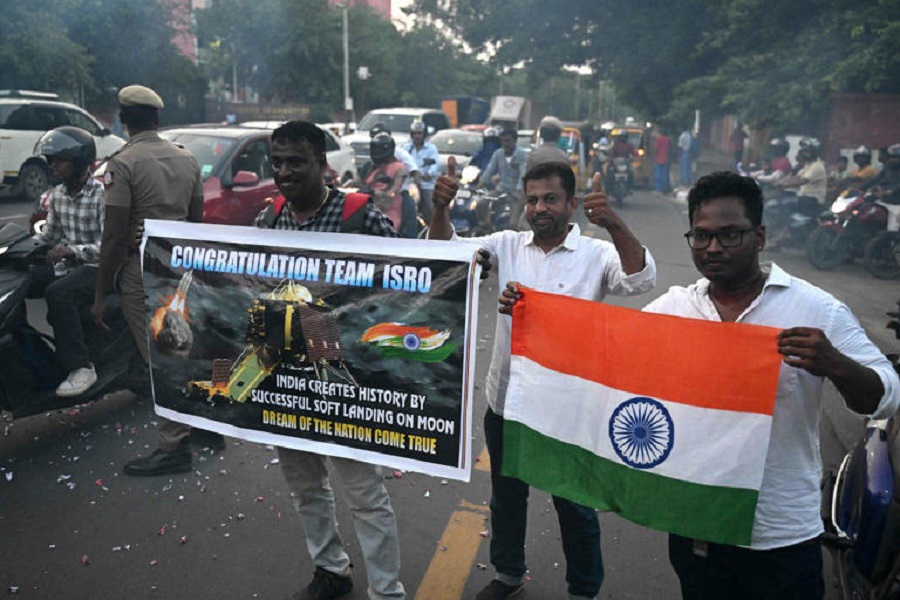India Achieves First Soft Landing in Moon’s South Pole Region
Just days after the failed Russian moon landing mission Luna-25, India has become the fourth country to successfully perform a soft landing of a probe on the Moon. According to the Indian Space Research Organisation (ISRO), Chandrayaan-3 (“Moon Vehicle”) successfully landed the probe in the Moon’s South Pole region on early afternoon Central European Summer Time. Chandrayaan refers to the overall mission as well as the orbiter, while the lander module is named Vikram.
The Vikram probe is the first to achieve this feat in the South Pole region, the same area where the Russians had planned their landing. However, Vikram did not land exactly at 90 degrees south latitude, the actual pole, but rather at a considerable distance of around 69 degrees south, between the Manzinus C and Simpelius N craters, which is over 600 kilometers away.
“The mission is a big leap,” said Indian Prime Minister Narendra Modi, who joined virtually from the BRICS summit in South Africa. Prior to this, only the Soviet Union, the United States, and China had successfully accomplished soft landings on the Moon, with China achieving it most recently in 2020. A previous landing attempt by India in the summer of 2019 had ended in failure, resulting in the probe crashing on the Moon.
The mission, which began on July 14 at the Satish Dhawan Space Station in the southern state of Andhra Pradesh, aims to explore the previously under-studied southern side of the Moon for around two weeks. The mission also includes a rover called Pragyan. The South Pole region is of particular interest because of the presence of water ice deposits beneath the surface. Future Moon missions could potentially utilize these resources for chemical reactions, fuel production using complex processes, or even human consumption.
Most previous moon landings have targeted regions close to the lunar equator. Out of the 22 successful missions of this kind, six were manned (the Apollo missions by the United States from 1969 to 1972).
European Congratulations on Behalf of Europe
Immediately after the touchdown, the European Space Agency (ESA) conveyed its congratulations via the X (formerly Twitter) platform. “Incredible!” wrote Josef Aschbacher, the director general of ESA from Tyrol, Austria. He continued, “What a way to demonstrate new technologies and achieve India’s first soft landing on another celestial body. Well done, I am thoroughly impressed.”
Aschbacher highlighted the ESA’s involvement in monitoring the lander module’s functions and the contribution of European space communication systems to this groundbreaking Indian mission.
India’s space program began in the 1960s, initially focusing on cost-effective satellite launches. However, the country has since set more ambitious goals, extending its reach to Mars and recently announcing an increased collaboration in space exploration during Prime Minister Narendra Modi’s visit to US President Joe Biden.
Private companies are also venturing into lunar exploration. In April, a privately-funded moon landing by Japanese space firm Ispace failed with the uncontrolled crash of the “Hakuto-R” probe. Previous private moon missions had also faced setbacks. In the near future, US companies Astrobotic and Intuitive Machines plan to independently attempt soft landings. The motivation behind these endeavors is the potentially lucrative commercial transportation of goods to and from the Moon, including lunar resources.














































